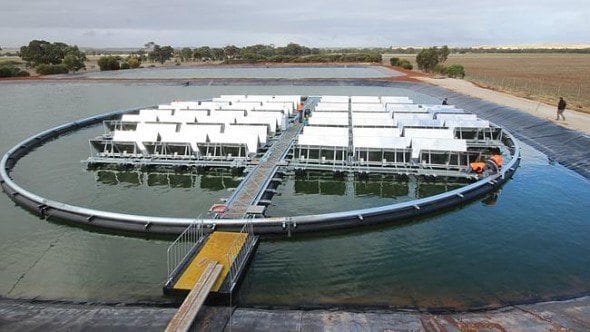
Another local government in regional Australia is weighing up the benefits of installing floating solar PV arrays on council owned water stores and waste treatment plants, to reduce its carbon footprint and offset rising power costs.
The Goulburn Post reports this week that the Goulburn Mulwaree Council planned to call for expressions of interest before Christmas for feasibility studies into both solar and bio-gas generation projects on council land and assets, including its water stores.
The council – which last financial year spent $1.55 million on electricity, much of it to power water and sewer infrastructure and street lights – is also working to cut its greenhouse gas emission by 30 per cent by 2020 based on 2005/06 levels, as part of its sustainability action plan.
Council has already installed solar panels on several council buildings, the paper said, and at its most recent meeting, agreed to install a 45kW system at a government storage depot.
Bio-gas generation is planned for the new $30 million wastewater treatment plant, which currently under construction.
In terms of floating solar, Council general manager Warwick Bennett said the council would start with the Marulan water treatment plant, due to its storage dam being comparatively close to the water treatment plant.
Bennett said the council was also looking at installing a solar farm on spare land surrounding the wastewater treatment plant, that would be freed up after the plant becomes operational.
“It (the plant) will be a much larger user of electricity and we are looking at solar to offset that. There is opportunity for a 700 to 800 acre solar farm there,” he said.
The idea of installation solar and wind farms at, or on, council-owned dams and water treatment facilities has been gaining popularity around the country, particularly among local government groups who often own the energy hungry utilities.
In April this year, Queensland’s Gold Coast Council proposed the installation of a series of floating solar PV arrays on its network of wastewater ponds both to help power the city’s wastewater treatment plants – cutting council operating costs – while also cutting evaporation from the ponds.
And in South Australia, the state’s largest water and sewerage services supplier, SA Water Corporation, announced plans to commission a commercial-scale solar and storage system at its Crystal Brook Workshop site.
In a Request for Tender launched in July, the company – which manages more than 27,000km of water mains, including 9,266 km in the Adelaide metropolitan area – said it was seeking to build a grid-connected, rooftop solar PV system of more than 100kW, along with a 50kWh battery storage system and “smart controls,” to manage periods of high electricity prices and ensure safe and sustainable delivery of water to customers.
Meanwhile, in Goulburn, plans are also underway to develop a 1MW community-owned solar farm, led by Community Energy 4 Goulburn in collaboration with local business Divall’s Haulage – owner of the land the solar farm is slated to be built – and Infigen Energy.
This article was originally published on RenewEconomy’s sister site, One Step Off The Grid, which focuses on customer experience with distributed generation. To sign up to One Step’s free weekly newsletter, please click here.







